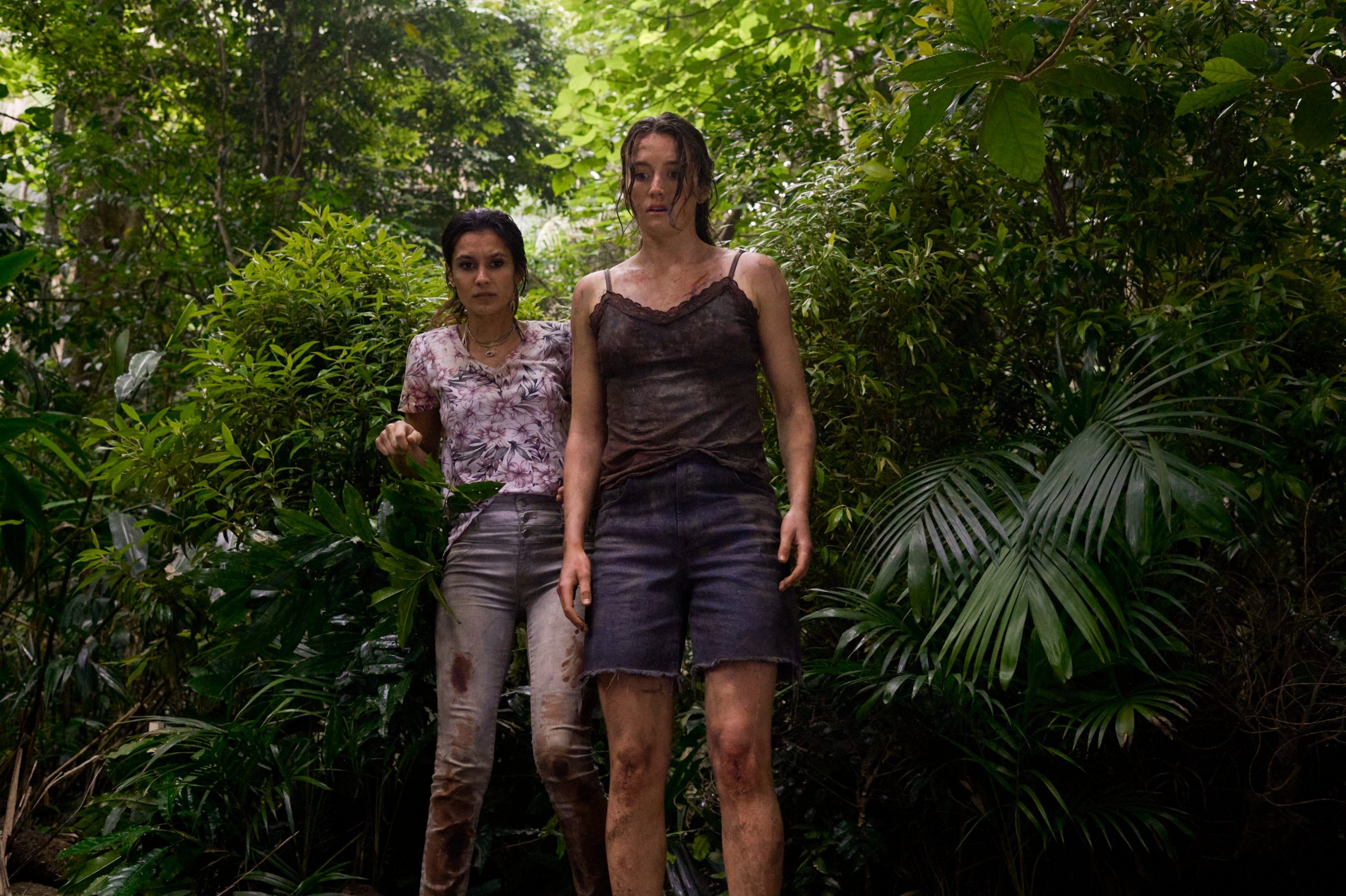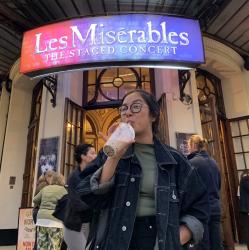
Life & Style Editor Julia Lee reviews the latest season of The Wilds, dissecting what the introduction of male characters means for the show
Warning: this article contains spoilers for The Wilds.
Seventeen months, a rating change and eight additions to the main cast later, season two of Amazon Prime’s The Wilds is finally here. The series is a modern twist on the deserted island story, where a group of girls (and boys, as we had come to learn at the end of season one) are stranded on an island with nothing but the clothing on their backs and occasional gifts from the tide. The island may have beautiful beaches, lush forests, waterfalls and natural hot springs, but the core of the story is less so their exploration of the wilderness, but a dissection of how the characters’ pasts influence their actions in a place where there are none of the normal constraints from the outside world.
That was what the audience fell in love with in season one. A female-led show where each character is given their own story – sensitive portrayals of the everyday traumas inflicted upon young women under structural patriarchy. Women who arrive on the island say they ‘don’t get tight with girls’, but over mere weeks they become willing to ride or die for each other– by their own words, a family. It stands to reason that a male-centric storyline must be exceptional to appease fans of season one.
It stands to reason that a male-centric storyline must be exceptional to appease fans of season one
We found out early on that the island was an experiment set up by Dr Gretchen Klein (Rachel Griffiths) to prove that women would better serve as leaders of the world, a matriarchy if you will, or a Gynotopia if you are Gretchen herself. Season one saw her being subtly hypocritical, a radical, bioessentialist feminist appealing to liberal sensitivities for funding. She makes grandiose speeches to imaginary audiences and manipulates vulnerable girls to serve as confederates. In season two Gretchen was much more explicitly villainous, and in turn, much more comically dressed down. While the experimental methodology in season one was poor, season two seems to throw it out of the window entirely.
To prove that women are superior by the sole virtue of their sex, a male ‘control group’ was necessary, and season two splits focus between the girls and introducing the boys. The tension between overwhelming the episodes with the boys’ narratives and only showing what was necessary to contrast with the girls’ was apparent. While season one’s structure perfectly introduced and endeared us to the characters– each girl had a dedicated episode– season two abandons this formula for a confusing mix of chronologies.
Of the eight boys only half have backstories, most of which are significantly weaker than the girls’. Where last season each girl’s characters are built upon through flashbacks that correspond to pivotal moments on the island timeline, the episodes in season two blur together not only as a consequence of underdeveloped backstories but also the constant back and forth between the islands that quickly became tiresome.
Some girls’ development took a backseat and potential plot threads are left dangling
We were introduced to the girls as pairs and as individuals. Childhood friends, twin sisters, acquaintances, best friends. Performers, athletes, carers, bookworms. Each episode focuses on one girl’s past, present and future, and the placement of each girl’s episode is significant. For example, right after the girls spot a potential rescue plane, we went into Shelby’s (Mia Healy) backstory where her family is so homophobic she would rather be stranded on a deserted island than go home. Her internal conflict continues into season two, and the blossoming relationship between her and Toni (Erana James) may be the only part of the girls’ storyline I felt received the screen time it deserved. The story we were given was certainly sufficient, but it wasn’t fulfilling the way season one was.
Some girls’ development took a backseat and potential plot threads are left dangling. Notably, the audience is left to fill in the gaps of Shelby’s coming out. Nonchalance works sometimes, and there are other great examples in the show, but with her story so focused on unlearning internalised homophobia, the 180º from the past season deserved addressing.
What we did have of the girls the show unequivocally did right. Leah is again the narrator of the season, Sarah Pidgeon putting on a phenomenal performance as the resident sceptic. Her paranoia is more subdued on the primary timeline, offloaded by Fatin (Sophia Ali)’s own suspicions and not insignificant cameos by alternative rock musician Ben Folds. Leah shines post-island, bridging the connection between the adults, boys and girls.
Another star is Reign Edwards as Rachel, whose relationships with the other girls had the most growth by far. Her double act with Leah gave some of the most hilarious and heartwarming moments, while her processing the grief of losing her sister with Shelby and Dot (Shannon Berry) was some of the most heartbreaking. Martha (Jenna Clause)’s fate was one of the biggest mysteries from last season, and her descent since taking up the mantle as the group’s hunter is profound and haunting.
Like the rest of the show, there were some jarring millennial-isms, but the boys suffered from too little content, not too much
While the girls have become comfortable with each other, the boys’ island is rife with conflict that was, at first, not unlike the girls’ in season one. However, given the circumstances under which they are introduced, ‘the perfect control group’ in Gretchen’s very questionable experiment, the audience can assume sabotage from the start. Alas, they have to contend with a monster in their ranks in a place with no society, much less laws. A turning point mid-show prevented them from ever reaching the level of community the girls had and forced them to deal with having the power of life or death over someone who is morally irredeemable. This is no doubt the most controversial and crucial part of the boys’ storyline, but an important one to dissect.
Despite my reservations regarding the structure of the episodes, I believe the boys’ stories were well handled and interesting, though the characters are less likeable by design. There were many ways one could explore the effects of patriarchy on young men, and The Wilds’ route was nuanced and realistic. Scotty (Reed Shannon) becomes attracted to the capitalist hustle, Ivan (Miles Gutierrez-Riley) takes the preemptive offensive, and Raf (Zack Calderon) relies on external validation. Like the rest of the show, there were some jarring millennial-isms, but the boys suffered from too little content, not too much. The thinness of their characters as it stands is to the detriment of their already precarious popularity.
The Wilds remains one of the most thoughtful shows I have ever seen. The ‘field notes’ add interesting bits of trivia that show the amount of thought the writers put into the story. The actors are encouraged to connect with their characters through the creation of playlists. Music is embedded into both characters and atmosphere – the second season includes an opening to ‘epiphany’ by Taylor Swift, ironic use of ‘Happy Together’ by The Turtles (the best way), and a ‘Welcome to the Black Parade’ by My Chemical Romance jump scare.
Season 1 for me was so close to perfection that as good as season two was, it felt like a sophomore slump. For more than two years, The Wilds’ fanbase has been young queer women. Adding men to the main cast is not only a seismic shift in the content of the show, but its audience and the fandom space it has curated. Season two gave us another canonically sapphic main character and seemed to hint at another main sapphic couple, but we have been burned before. With a fresh dynamic ripe for exploration in season three, I hope that the producers and writers continue to understand and value their initial fanbase if and when The Wilds continues.
Rating: 3.5/5
Check out more Redbrick TV reviews here:
Review: Derry Girls – Season Three

Comments